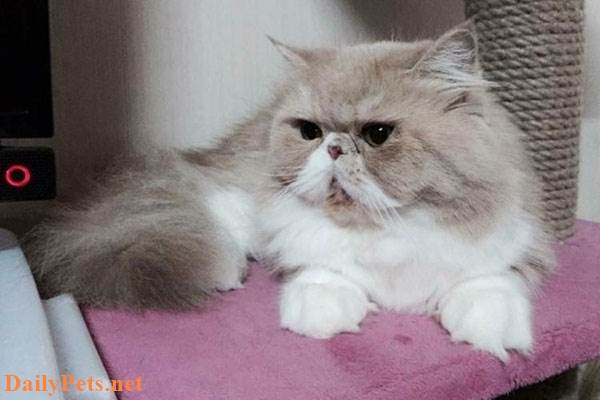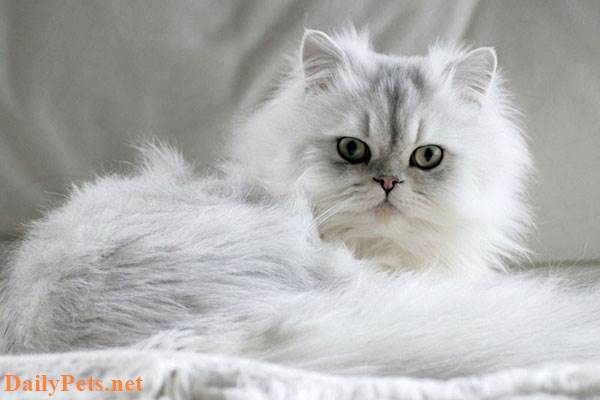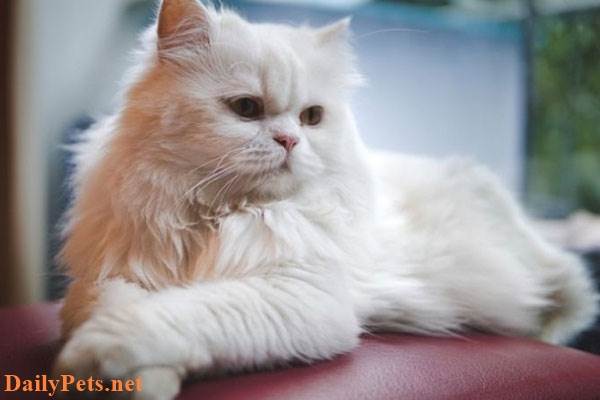The Persian cat breed is a stout, lovely pet cat with extremely attractive fur that many cat lovers love and choose as a family pet.
Although this cat breed is more difficult to care for than other ornamental cats due to its beautiful appearance, many people still hunt Persian cats in our country. Therefore, in this article, DailyPets.net will update you with full information about the origin, personality characteristics, appearance, and how to care for Persian cats.
Learn about the Persian cat breed
The Origin of the Persian Cat
The Persian cat is a breed of cat that originated in ancient Persia (present-day Iran). They are considered as native cats in Iran today. Bred by the British, they now grow very strongly in European countries.
Classification of Persian Cats
There are four types of Persian cats:
Purebred Persian cat (traditional, aka flat-faced cat)

Exotic cat (or Persian short-haired cat)

Himalayan Cats

Chinchilla cat

Popular Persian cat coat colors
Some common coat colors of Persian cats include:
- Orange-eyed white-haired Persian cat
- Persian cat with white hair and blue eyes
- White Persian cat with 2 eye colors
- Creme Colored Persian cat
- Hungarian Persian cat
- Lilac color Persian cat
- Blue-gray Persian cat
- Chocolate Persian cat
- Black Persian cat
- Creme and white Persian cat
- Hungarian and white Persian cat
- Lilac and white Persian cat
- Persian Cat in Gray, Blue, and White (Bicolor)
Persian cat appearance characteristics
Appearance: Big head, flat face, big colorful eyes, shorter and smaller nose than normal cats, slightly drooping and small ears
- Weight: Average about 3-5 kg
- Length: Adult cats have a length of 25-30 cm
- Coat: The cat’s coat is attractive; the cat has 2 coats on the outside, and the long coat covers the inside with a warm short coat.
- Lifespan: They can live 10-15 years if well developed; this breed adapts to the environment very well
Personality Traits of Persian Cats
Persian cats have friendly, approachable, and docile personalities. Get along with other animals, always preferring peace. Persian cats are also very fond of children, so they will not harm them.
Reasons to adopt a Persian cat
The Persian cat has a small and beautiful warm coat, so holding the cat will be very comfortable. In addition, this cat breed also loves to be close to people and easy to take care of.

How to take care of a Persian cat
Persian cat food
Wanting a cat to grow well first depends on a food source full of nutrients, including:
- Protein: Meat, fish, chicken, pate, animal organs,…
- Fiber: Nuts, vegetables, dry food, …
It is possible to add minerals and vitamins to strengthen the resistance. Limit feeding cats fermented foods, chocolate, and cow’s milk;.. not good for the cat’s digestive system, and is more dangerous and can cause death.
Diet of the Persian cat by stage
Cat’s diet is always an important and necessary issue for cat owners:
- Cats under 1 month of age need to be breastfed or given milk.
- Cats 1 – 2 months old start weaning with crushed rice mixed with pureed meat.
- Cats 2 – 4 months old feed cats 3 meals/day. You can train your cat to eat commercially available dry food.
- Cats 4 months and older feed 2 meals/day.
How to care for and hygiene for Persian cats
- Coat care: Regularly brush your cat’s coat to keep it straight and smooth. Use a specialized comb to brush to avoid damage to the cat’s hair.
- Hygiene: Bathe your cat about once a week. Because most cats don’t like water.
Common Persian Cat Health Problems
Clean the ears, eyes, and mouth for cats regularly to avoid ear, eye, and mouth diseases. Take your cat to a regular check-up and deworm to keep the cat’s intestines healthy.
Some of the health problems of Persian cats can include:
- Cats have difficulty breathing or breathing heavily for constricted nostrils.
- Cat teeth are uneven.
- Cats have frequent and profuse tears.
- Cat’s eyes suffer from cherry eye condition and are encrusted.
- Cats are extremely sensitive to heat.
- Cats have ringworm and fungal skin infections.
Notes when taking care of Persian cats
Persian cats are prone to health problems if not taken care of properly. When raising a cat, you need to pay special attention to the issue of cat vaccinations.
The specific vaccination schedule for cats is as follows:
- 6 weeks: 1 shot of 3 diseases vaccine
- 9 weeks: 1 shot of 3 diseases vaccine
- 16 weeks: 1 dose of rabies vaccine
After that, 1 booster dose of 3 diseases vaccine will be given yearly.
The vaccine for 3 diseases for cats will include leukopenia, infectious rhinotracheitis, and respiratory disease caused by Herpesvirus.
Note that the vaccine should only be given to cats in good health, with no signs of fatigue, anorexia, illness, fever, etc.
Notes when buying Persian cats
When buying a cat, you need to have basic knowledge about cat care and cat care.
Choose reputable, quality, and well-breeded cat shops.
Carefully check the cat’s health when buying; refer to the information about the cat’s vaccinations, health, … before buying.

















